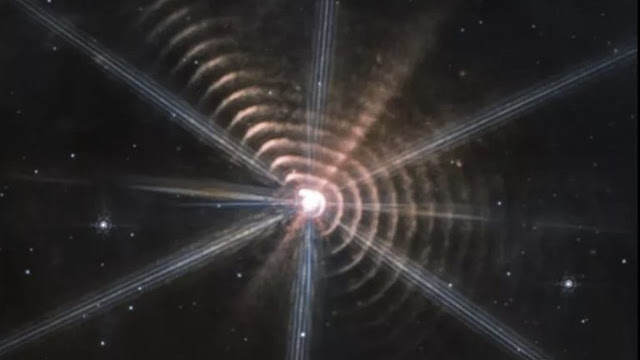Scientist Judy Schmidt: Nope, I don't know what this is. Some kind of spiral nebula around WR140. I'm sure we'll find out more later.
The Universe, truly, is full of wonders, and the James Webb Space Telescope has just given us our best views of one of them yet.
The object in question is a star around 5,600 light-years away, and Webb's infrared eye has picked out an extraordinary detail: it's surrounded by what appear to be concentric rings of light radiating outward.
While Webb's characteristic diffraction spikes are not 'real', those concentric rings are – and there's a wonderful and fascinating explanation for them.
The star is actually a binary pair of rare stars in the constellation of Cygnus, and their interactions produce precise periodic eruptions of dust that are expanding out in shells into the space around the pair over time.
These shells of dust are glowing in infrared, which has allowed an instrument as sensitive as Webb's MIRI to resolve them in exquisite detail.
The star is what is known as a colliding wind binary, consisting of an extremely rare Wolf-Rayet star, called WR 140, and a hot, massive O-type star companion – another rare object.
Wolf-Rayet stars are very hot, very luminous, and very old; at the end of their main-sequence lifespan. They are significantly depleted in hydrogen, rich in nitrogen or carbon, and losing mass at a very high rate.
O-type stars are among the most massive stars known, also very hot and bright; because they are so massive, their lifespans are incredibly brief.
Nope, I don't know what this is. Some kind of spiral nebula around WR140. I'm sure we'll find out more later.
— Judy Schmidt (@SpaceGeck) August 29, 2022
h/t to @yuvharpaz & @JWSTPhotoBot pic.twitter.com/ukenoIXrnj

